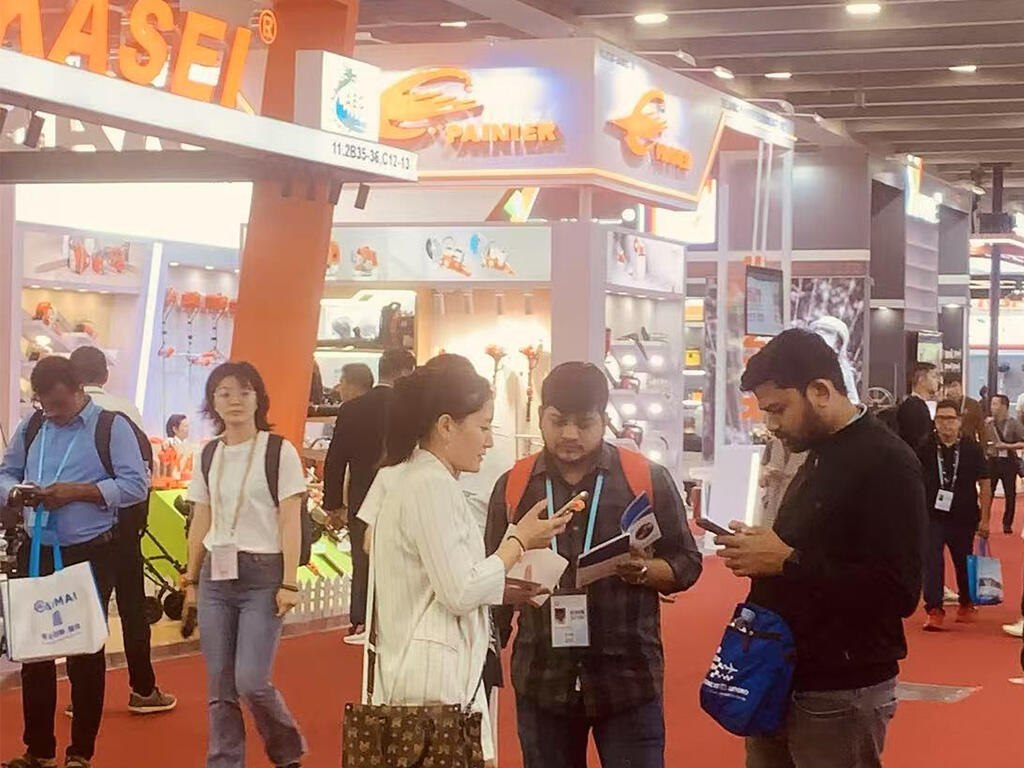In grinding wheels, material selection is the key to optimum performance. Aluminum oxide and diamond blades are commonly used choices. Aluminum oxide, on the other hand, is known for its strength and resilience, particularly when compared to working with ferrous metals such as steel. Thanks to its cutting ability and durability, it is the utility player of many industries. On the other hand, diamond blades (the hardest abrasive available) are superb at more precise cutting applications, particularly when drilling through materials such as carbide and ceramics. Comparing the results, we find that aluminum oxide is hard and diamond blades have long lifespan and good cutting performance. Another study published in the Journal of Manufacturing Science, states that diamond blades are the best blade for high precision construction materials, the most cost effective cutting method, and deliver a lower cost per cut, higher cut quality, better productivity, and better safety. This is why selecting the correct material is extremely critical as can be seen in the field of automotive manufacturing and aerospace engineering.
### Bond Types: Resin, Metal, and Vitrified StructuresThere are also a variety of bond types of grinding wheels, each providing a unique functionality. Soft and Flexible Ideal for softer materials or applications requiring fine finishes These wheels are very flexible and can be closely shaped on the work. Metal-bonded wheels, meanwhile, are adored for their durability, which makes them ideal for applications in rugged environments, like construction and mining. Vitrified bond wheels have excellent performance for precision grinding, however it is imposed the variation of grinding condition such as feed rate and depth of cut in grinding. Choosing the right bond type has much to do with what you’re working on and what specifically you’re looking for. For instance, in precision engineering such as the manufacturing of tools, forming stability is obtained by means of vitrified bonds. Each bond complements the other and depending on flflflfl888o—your speciflfl8888flflflflflflflflflflflflflflflflflflflflflflflflflflfl8888888888fl8888flflflflflflflflflflflflflflflflflflflflflflflflflflflfl8flflflflflflfl8fl8—c applications, makes grinding wheels effective in various industrial applications such as automotive, aerospace and other industries.
Common Industrial Applications of Grinding Wheels
### Surface Grinding for Metal and CeramicsThe surface grinding is a special type of grinding process.In this process, by holding work piece on the table, by the surface or perimeter of rotating grinding wheel, material can be removed by the abrasive grinding action is used in surface grinding. It involves the use of rotating abrasives to obtain smooth, precision surfaces, and it is crucial in several industries, including automobile and aerospace construction. There is always the need to know the conditions under which surface grinding is efficient. The results are strongly affected by some parameters such as wheel speed, feed rate, and cooling. For instance, good combinations of these parameters with optimized conditions can yield improved MRR with SOC preservation. Various studies from manufacturing industry have demonstrated that carefully controlled surface grinding can enhance the quality and the productivity of the product.
### Precision Cutting with Diamond Wire and Metal DiscsWhen precision cutting is required for extremely hard materials such as metal and ceramics, diamond wire cutting and metal disc cutting are incomparable options. Diamond wire cutting, in the case of a need for exact dimensions and little material loss, can be applied most effectively when in semiconductor and construction. By contrast, the metal discs function well at higher cutting speed which is required to cut through tough materials such as metal fabrication. Using this technique, you make less mistakes, you waste less and it makes you more productive and profitable. Case-studies in concrete production demonstrating the utility of inherent modelling and process control techniques are provided from industries such as aerospace and automotive metal production. They are crucial in challenging work requiring accuracy and reliability – leading to development and performance in the manufacturing processes.
For more technical details on these applications, manufacturers can refer to specific product literature and case studies that illustrate these techniques in practice.
Selecting the Right Grinding Wheel for Your Project
### Factors to Consider: Grit Size and Workpiece MaterialGrit Sizes: Explained Of course you don’t need to be a materials engineer to see this! Grit size affects the material removal and the surface finish. Grit size relates to the size of the abrasive particles in the wheel, with a larger grit size providing a fast cut, and finer grit decreasing finish. For instance, you might need to use a medium grit so it doesn't pull out too much material but not so fine as to be laborious to use on your medium soft metal material, whereas ceramics will commonly need the finest you can use so they are both accurate. Using the incorrect grit size can cause poor finishes, premature wear and possible workpiece damage.
Grit selection is also influenced by the type of material being cast, particularly the hardness and the composition. Metals such as steel might require other grits than abrasion resistant composites. A range of success stories, from the use of considerable sized grit for rapid material removal on the metal cutting discs in the Automotive sector, right down to Niifinish in Aerospace parts, show how it can be tailored to the needs of a project. Knowing these subtleties is crucial for efficient operation as well as for elevating the life and quality of the product.
### Matching Wheel Types to Operations (e.g., Carbon Fiber Polishing)Selecting the best wheel type for a particular application – like carbon fibre polishing – is crucial to the success of any job. There are many type of grinding wheels; some of them are designed for performing such operations as cutting, while the others are used to grind metals and other materials. With carbon fibre, a wheel is needed that can provide a fine finish without fracturing or parting the fibres and this often requires an abrasive with a special friability.
The expert advice is to match the type of wheel with the way you are going to use it, and not to make such elementary mistakes as using the wrong type of wheel to take a poor cut or to achieve a good finish. Become Wheel Wise Itâs crucial to resist the temptation of choosing a wheel type based solely on upfront material costs and thinking all wheels are equal when it comes to use in the field or over time. These mismatches can, eventually, cause waste and cost excess in the long run. And, to get the most performance out of your wheel, match it to your wheel operating specs to get a high-quality wheel and a great finish.
Top Grinding Wheel Products for Professional Use
### Korean Sunflower Wheel with Metal BackingMade in KOREA Korean sunflower wheel with metal backing This is an excellent grinding and polishing wheel, it has metal of course, and intended for use with angle grinders. It's noteworthy for it's butterfly design providing center of balance. This special design not only added the workpiece contact surface, and also with linear bearing, addition to is more efficient. Constructed of stainless steel, it is durable and offers good wear and corrosion resistance. This wheel is especially effective in heavy duty applications that require a strong,robust wheel. [Find more details here.] (https://www.dt-abrasives.com/korean-sunflower-with-metal-backing990)
### Small Sand Belt for Multi-Material GrindingThe mini sand belt is a widely used fine grinding tool for many materials such as stainless steel, wood, wood, etc. This belt can satisfy all your surface finishing requirements from grinding and deburring to fine finishing. Its versatility and ability to be applied for use in woodworking, automotive, and fabrication is essential for all shops. It is a cost effective alternative compared to other grinding type solutions without the performance downgrade. [Read more about this product.] (https://www.dt-abrasives.com/small-sand-belt177)
### Wire Drawing Wheel for Stainless Steel FinishingThe wire cup brush is an essential tool for obtaining a high-quality surface finish on stainless steel workpieces. It has strong bendability, adhesive power, and themoutstanding cutting ability to achieve with no turbidity the clear shining condition. The ability of the product to produce consistent performance without the use of wax or frequent change-outs helps to increase productivity in manufacturing environments. Using its capabilities can also result in remarkable improvement in the finish quality, about which many users testified. [Discover this product.] (https://www.dt-abrasives.com/wire-drawing-wheel)#product_info/about.html
### Vertical Wheel for Surface DeburringThe Vertical deburring wheel is engineered for surface deburring materials! It combines the characteristics of cloth wheel and grinding wheel, polishing, deburring and paint, scale and rust removal. Experts in the field propose that when deburring is performed, it tends to increase production rates, measured in statistically lower processing times. These characteristics make it an attractive option in manufacturing. [Read more about this vertical wheel.] (https://www.dt-abrasives.com/vertical-wheel554)
### Diamond Polishing Disc for High-Precision WorkThe diamond polishing pad is a keystone in high precision grinding, achieving excellent performance on materials such as: metal, stone, ceramics, composites, glass and wood. When it comes to both high grinding efficiency and the best possible surface quality at the same time, this high-performance grinding wheel with a ceramically bound grinding grain preserves resources while maintaining high economic efficiency. People often praise how good it is at getting the finishes you are wanting, so a good one to opt for if you require precision finishes. With its unique design and performance, it stands out in the market. [Read more about the diamond polishing disc.] (https:// If you have any other questions, please do not hesitate to contact us.orianCalendarfilian)
Maintenance and Safety Best Practices for Grinding Wheels
### Dressing Techniques to Prolong Wheel LifeCorrect ways for improper use of the grinding wheel eye Chapter 1: reasonable use of grinding wheel life dressing is very important. Your used dressing becomes the wheel's working surface for optimum runoff and grinding results. I have learned that regular dressing should be based on the type of wheel application, frequency, and the material being ground out to reduce wheel wear. Techniques such as diamond dressing achieve precision by tidying and reshaping the wheel, to ensure it performs optimally. The data is out there that propection can result in strong return on investment. For example, well-maintained wheels have a longer life, need to be replaced less often and perform better, resulting in less downtime and more productivity.
### Coolant Use and Heat Management StrategiesThe effective use of coolants in the grinding process is of paramount importance to effectively control heat and to improve the grinding efficiency. In addition to keeping excess heat in check, coolants reduce the likelihood of thermal damage to the wheel and the tool. The choice of coolant is based on the work material, the grinding process, and the grinding conditions in individual shops. In my experience coolants, be it synthetic, semi-synthetic or oil based can all be tailored to suit specific applications. When coolants are applied in an effective manner, significant enhancements to both tool life and performance are evidenced through statistical data. For example, tool life can be prolonged by up to 30% with appropriate coolant delivery, smoothing the process and lessening the blast of temperature that can distort the quality of the workpiece.








